And we end with the trilogy of «Everything you believed about the Inquisition and it was not true » (part 1 and part 2) with points 5 and 6.
It was used by the civil authority and to satisfy revenge
You don't have to be a lynx to realize that, on occasions, it served to satisfy revenge and resentment and that, being at the service of the Crown, it was used for other matters unrelated to faith. As proof of this, two very relevant and illuminating cases.
Envy and lies
kept me locked up here.
Happy is the humble state
of the wise man who retires
from this evil world,
and, with a poor table and home,
in the delightful field,
with only God he has compassion
and alone his life passes,
neither envied nor envious!
This is how Fray Luis de León summed up his inquisitorial way of the cross, the result of personal revenge and resentment between religious orders, specifically between Augustinians and Dominicans. Fray Luis de León, an Augustinian to be exact, was, in addition to an accomplished poet, an intellectual of his time. And that already puts you in the middle of the mediocre. And he paid for it. Fair enough, he won a professorship at the University of Salamanca in 1561 against a Dominican. You already know that Quod natura non dat, Salmantica non præstat (what nature does not give, Salamanca does not lend it). During these years there was some theological confrontation between Augustinians and Dominicans, via university publications, but the final straw was a new professorship obtained a few years later by our protagonist. And yes, again, to the detriment of a Dominican. That was already going beyond dark brown and the Dominicans were not going to put up with more than that Augustinian was wetting their ear. And they had it easy, because, let's remember, the inquisitors were chosen from among the members of this order. You just had to find a question of faith to wallpaper it. They began to review any document prepared by Fray Luis de León, even the commas. And the comma is not a trivial issue, because there is an error in the King James Bible , English translation of the Bible named after King James (Jacobo) I, which is known as the "blasphemous comma", since it completely changes the meaning of the phrase. It says “And there were also two other criminals ” [crucified next to Jesus], when it should have been “And there were also two other malefactors ”, so as not to include Jesus in that distinguished group. If our Augustinian had made that mistake, the full weight of the Inquisition would have fallen on him. They searched so much that they found it. Fray Luis had translated the Song of Songs from Hebrew into Spanish without authorization and, furthermore, it was not a translation that followed the official one by Jerónimo de Estridón, the author of the Vulgate, the official translation of the Hebrew and Greek Bible into Latin. So, they already had the arguments to denounce him before the Inquisition for being a heretic, in this case a Protestant. Wow...!

Fray Luis, who was not lying, admitted that he had written it but that it was a private manuscript, that he had not made it public and that, surely, [a Dominican hand, and this is from me] had stolen it from his cell to make a copy. When asked why that translation, he replied that he had written it for a cousin nun, Ana de Osorio, who did not know Hebrew or Latin, and had asked her to explain that book of the Old Testament. And he believed that the best way to do it was to translate it directly from the original in Hebrew and, by the way, his composition was much better than that of Saint Jerome. Fray Luis defended himself, point by point, against all the accusations in a tedious process of almost five years. He was finally acquitted, but no one returned the five years he was in prison. It is said, and knowing his character it has all the appearance of being true, that the day he returned to teach at the University, with all the expectant students, far from attacking the injustice suffered, calm and serene, as if nothing had happened five years, his first words were:
Dicebamus hesterna die… (We said yesterday)
The next protagonist, who suffered in his flesh from the use and abuse of the Inquisition by the king, is Antonio Pérez , secretary of Philip II .
It was the night of March 31, 1578, when the silhouette of a rider with his horse approached a dark alley in the (today) Calle de la Almudena in Madrid. As he entered the alley, five assailants unhorsed him, killed him, and fled. From his clothes, he was a gentleman of high social position, but nothing was stolen from him. It had been a murder with all the aggravating factors:premeditation, treachery and nocturnality. That gentleman was Juan de Escobedo , secretary of Don Juan de Austria , half-brother of King Philip II. Despite the fact that the first rumors spoke of one more assault of the many that took place in the streets of Madrid and even for some skirt issue, they were discarded until all fingers pointed to Antonio Pérez, the king's secretary, as responsible. did he gain with this death? To answer this question, we are going to use a cinematographic resource, the flashback.
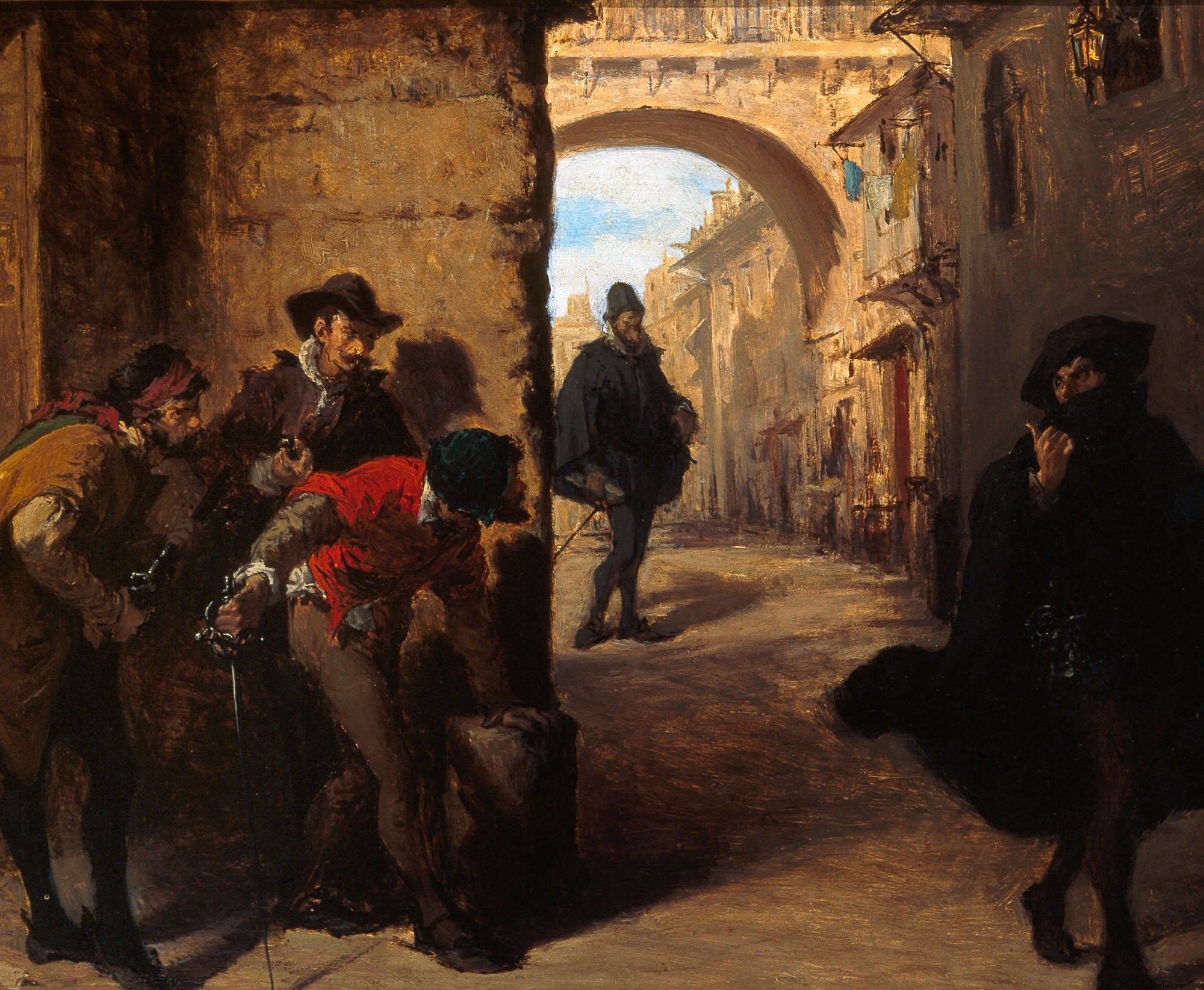
Don Juan of Austria was the illegitimate son of King Charles I and Barbara Blomberg, and, despite the fact that during the reign of his half-brother he was always treated as one more member of his family, the truth is that the king also I had celetes for him. The jodí was handsome, and he knew it, he was elegant, he had people skills and, furthermore, he fulfilled all his brother's assignments to the letter, both in military matters (suffowing the Moorish rebellion in the Alpujarras and the battle of Lepanto) as diplomats (in Lombardy and the rest of the kingdoms of Italy). Being part of the royal family and exceedingly fulfilling all the missions entrusted to him, don Juan thought that it was time for him to be granted some territories to govern and dedicate himself to idle life, and, for that matter, the treatment of "Highness". That yes, never demanding, only letting fall. And Philip II, who more than the Prudent King was the Distrustful King, ordered his secretary to control him. Said and done. Pérez appointed secretary of Don Juan of Austria to Juan de Escobedo, a man he trusted, to watch over him. Shortly after being in don Juan's service, Escobedo realized that, although he might have pretensions, he was a faithful man to his brother and changed sides, becoming his most trusted man. When Don Juan finished his diplomatic work in Italy, he asked the monarch to return to court, but Felipe preferred to have him around, righting wrongs and saving his ass, than having him idle at home rubbing shoulders with the nobles and close to court intrigues . So, he sent him to the hornet's nest in Flanders. As he had always done, he obeyed the royal order, but he sent Escobedo to Madrid to ask for money for the Tercios, who walked with one hand in front and the other behind, and to propose a strategy to gain control of England. And here the mess began. It seems that Antonio Pérez ate the king's head and made him believe that don Juan and Escobedo were dealing behind his back with the rebels of the Netherlands. And, as a good liaison that he was, he got the king to agree to take him out of the way -he didn't have to say that it looks like an accident or a robbery-. Logically, Pérez hated his pupil because he felt betrayed by him, but there had to be something more… and there was.
This Antonio Pérez was a cultured man (educated in the best universities), a lover of the good life (“too curious in clothes, rich and odoriferous ”) and also hugely ambitious. He had gotten his job thanks to his father, Gonzalo Pérez , secretary of Carlos I, but once inside he knew how to manage to seduce Felipe II and make the most of his position, logically for his own benefit. He was also in trouble, skirts and gossip (even selling state secrets), with Ana de Mendoza de la Cerda, the princess of Éboli . And it seems that Escobedo found out about these gossips and was going to denounce Pérez before the king. The pink press of the time, if it had existed, would have published that the king and his secretary shared a lover, and Escobedo would have been the one who leaked the news.

What is evident is that they abused his privileged position, as Marañón points out, to sell state secrets, and perhaps also due to family ambitions of the Princess in the matter of Portugal. Of which Escobedo must have suspected something, some news threatening to give them away. (Philip II and his time – Manuel Fernández Álvarez)
Be that as it may, Antonio Pérez, with the connivance of the king, ordered Escobedo's death. When all the fingers pointed at his secretary, the king stuck his neck out for him and the thing, for the moment, was left in tatters. When don Juan died, his letters and documents arrived in Madrid, and the king discovered Antonio Pérez's plot, realizing that his brother had always been loyal. Considering himself betrayed, Felipe II ordered prison for both. Of course, with different results:the princess of Éboli remained imprisoned for the rest of her days in the Ducal Palace of Pastrana (Guadalajara) and the secretary, for his part, had more luck, since he was released under surveillance after payment bail, while the case was investigated. In this way, the king relaxed the pressure that Pérez's enemies subjected him to and, at the same time, kept him under control. He knew too much. The problem was that the process took… 6 years!!! This was turning into a circus and, for the second time and under pressure, the king ordered that he be arrested. He now seriously, although for corruption and not for murder. It took two years, six months and one day (the day is my harvest)… after another 5 years of process!!! Seeing that there was no longer any escape, and helped by his wife, in 1590 he escaped from prison and took refuge in Zaragoza, where he had good friends and asked for protection to be judged by the Aragonese laws (fueros), which limited the royal jurisdiction. In Aragon, royal power was limited by the fueros and, the truth is that, even if it was only for hitting the Castilians in the nose, he had every appearance that they were going to let him go free. Felipe II was tied hand and foot and, it seemed, that the secretary was going to walk away scot-free. And I say it seemed, because the king resorted to the only institution that had jurisdiction in the entire kingdom, the Inquisition.
As we have said, the Inquisition intervened in matters of faith and the charges against Pérez were for murder, conspiracy, corruption and escape, but nothing that the Holy Office could get their hands on. No problem. He added the charge of blasphemy that he, curiously enough, uttered when he was in prison in Madrid. The local Inquisition claimed the prisoner to take him to his prison and be tried by them, but the people of Zaragoza, understanding that it was a violation of his privileges, took to the streets and had to back down. Things were getting complicated and the king banged on the table and ordered the army to be prepared. And Pérez went about his business, warming up the atmosphere, knowing that «a troubled river, profit for fishermen «. And he knew how to throw the hook very well... and the people of Zaragoza were bitten. That personal issue had signs of becoming a civil war. The Justice of Aragon picked up the witness of the secretary and, waving the flag of freedom, raised the city in arms, hoping that other territories of Aragon would join the cause. They were left alone. Seeing that things were getting ugly, Antonio Pérez, after involving the city that welcomed him and lighting the fuse of a war, fled to France. Philip II's troops entered the city without firing a single shot and the Inquisition tried him in the absence of a defendant and declared him guilty. An effigy was burned and his property confiscated. For his part, Antonio Pérez dedicated the rest of his days to throwing shit at what was his king and harming the interests of the monarch.
In Spain it smelled like a burned witch
Toad eyes, frog legs, may you be lucky all week!
Bat wings, earthworm tail, may you be happy today and always!
Hippopotamus molars, dragon horns, what no one ever hurt your heart!
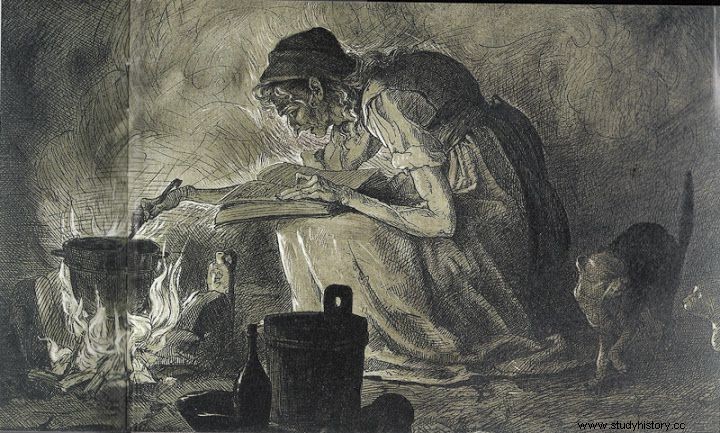
I suppose that more than one sorceress (denounced as a witch) will have been burned by one of these simple spells. Although since the 13th century the refrain of “haberlas haylas was already repeated. ”, it was not until 1484 when Innocent VIII , through the bull Summis desiderantes affectibus -better known as the "Bull on Witches"-, opened the ban on witch hunts...
It has reached our ears that a large number of people of both sexes do not avoid fornicating with demons, incubus [a male demon seduces a woman] and succubi [female demon seduces a man]; and that through their witchcraft, spells and incantations, they suffocate, extinguish and make perish the fertility of women, the propagation of animals, the harvest of the earth and, above all, they blasphemously deny the faith that is theirs through the sacrament of baptism, and at the instigation of the Enemy of Humanity do not hesitate to commit and perpetrate the worst abominations and most shameful excesses to the mortal danger of their souls.
Actually, those who were accused of witchcraft were none other than lifelong sorceresses, women, usually socially misfits, with knowledge of healing herbs, love potions or various spells. These practices were never well seen by the civil and ecclesiastical authorities, but neither did they go beyond a punctual lesson. The problem is that, now, the heretical component was added:pagan rituals in which the devil was invoked (goat version) and, in the middle of the forest, a party of sex, drugs and rock and roll was set up, to end with a black mass Come on, the coven of a lifetime. By the way, in order to participate in this erotic-festive show you had to prove your submission to the devil by passing the Osculum infame ritual. (infamous kiss). What did it consist of? Well, the devil would turn around, he would lower (if he was wearing) his pants and underpants and the witches would kneel down to kiss his asshole.
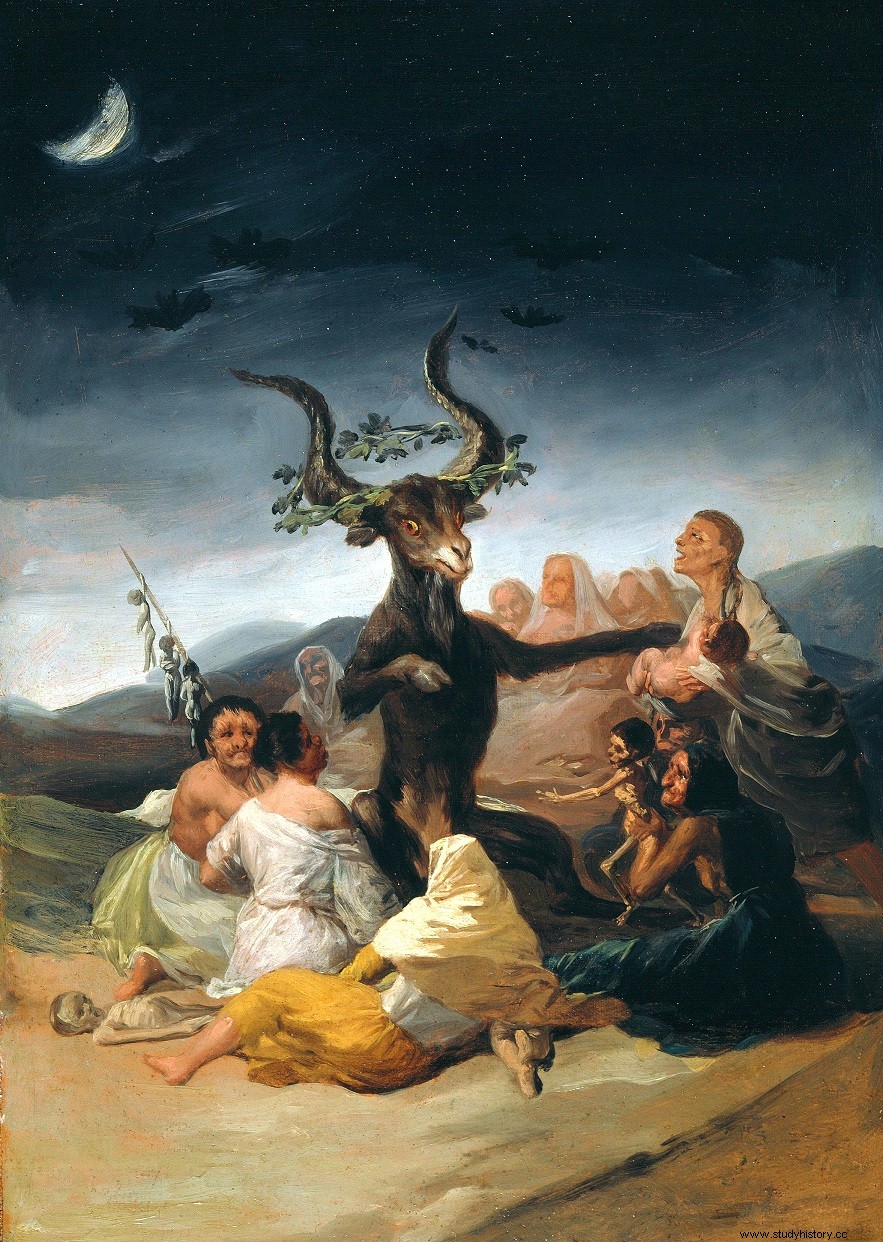
The Sabbath (1798) – Goya
After the official recognition, all that remained was to articulate the treatment that should be given to them, and that was taken care of by the Malleus Maleficarum (Hammer of the Witches). Written by two Dominicans, somewhat psychopaths and misogynists, it was published for the first time in 1486 in Germany and, later, spread throughout Europe, being a bedside book, especially in Protestant countries. It was a reference manual for witch hunters and their subsequent prosecution. And I say witches because the Malleus considers women as the priestesses of the devil and men simple assistants in these tasks, a kind of altar boys. The book defined witches as a "sect of women whose aim is to harm men «. take it now The book was divided into three parts:the first proved the existence of witchcraft, the second described the different forms of witchcraft, and ended by detailing the methods for detecting, prosecuting, sentencing, and destroying witches. According to the German Jesuit Friedrich von Spee of the 17th century, knowledgeable about the methods used to extract a confession...
Treat the ecclesiastical superiors, the judges and myself as those poor unfortunates, submit us to the same martyrdom, and you will discover that we are all witches.
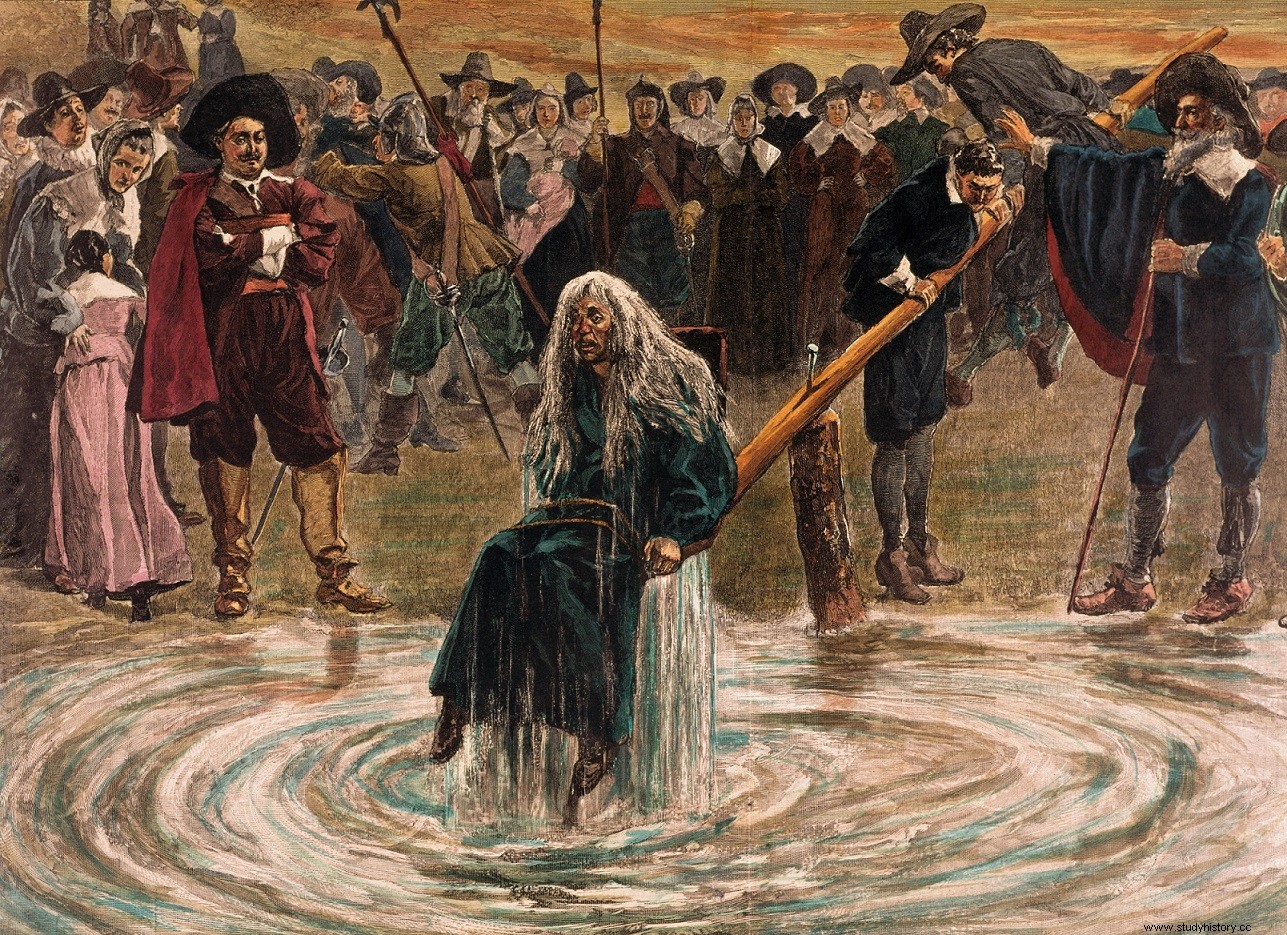
In addition, it also indicates what to do so that the authorities involved in the process do not fall under the spells of the witches - the clerics, by virtue of being so, were already protected. A full-fledged hunt that lasted three centuries. Unlike what happened with other heretical issues that we have already discussed, the Spanish Inquisition was not very prolific on the subject of witchcraft. The motives? Because here it was considered that witchcraft was a matter of trickery and superstition of people without culture, so to combat it, it was necessary to throw more sermons and pulpit than bonfire. And who knows if Julio Caro Baroja was not right when he said in The Inquisitor and other lives by trade what...
In the seventeenth century the Spanish, on the other hand, did not have much fame as magicians and sorcerers. Someone maintained —with clear animosity towards the country— that the devil did not trust its inhabitants.
In A Brief History of Witchcraft , my friend Jesús Callejo, gives us very revealing figures:
Today we know that more people accused of witchcraft died in Protestant countries than in countries professing the Catholic religion. In total, in those three centuries that I have mentioned, some 50,000 alleged witches were executed (mostly burned), well, Germany has the dubious honor of having killed half of them, in Poland and Lithuania 10,000 and in Switzerland 4000 On the other hand, in Spain 59 witches were killed, in Italy 36 and in Portugal 4. It makes you think.
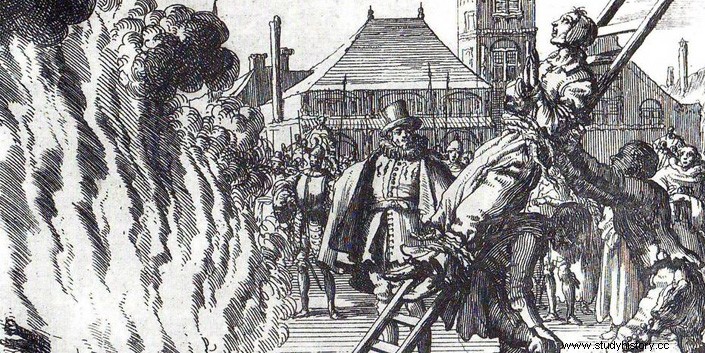
By the way, our friend Innocent VIII, the one with the bull that turned witches into flammable material, was famous for the bad behavior of his illegitimate children, of whom he recognized eight, although it is known that he had at least 16, and maybe some very well-known. I tell you, he died eight days before Columbus left Puerto de Palos, however, the following epitaph can be read on his funerary monument:Novi orbis suo aevo inventi gloria. Something like “His is the glory of the discovery of the New World ”. Why give him the discovery of America? An expert on Christopher Columbus, Ruggero Marino, suggests that Columbus could have been an illegitimate son of the aforementioned Pope, one of many, but more egregious and more favored with help and contacts. Something that would not surprise me at all. Perhaps that was the reason why the Genoese navigator insisted on always hiding his origins. Also his death has his particular story.
At that time it was thought that the ingestion of blood by young people rejuvenated the body. Ailing and convalescing from a neurological condition, he suckled at the breasts of a woman and in a desperate attempt to rejuvenate himself, he had three young men sacrificed to his health. Innocent underwent a blood transfusion and died on July 25, 1492 of an infection. He wanted to live longer and hastened his death by an old superstition.
